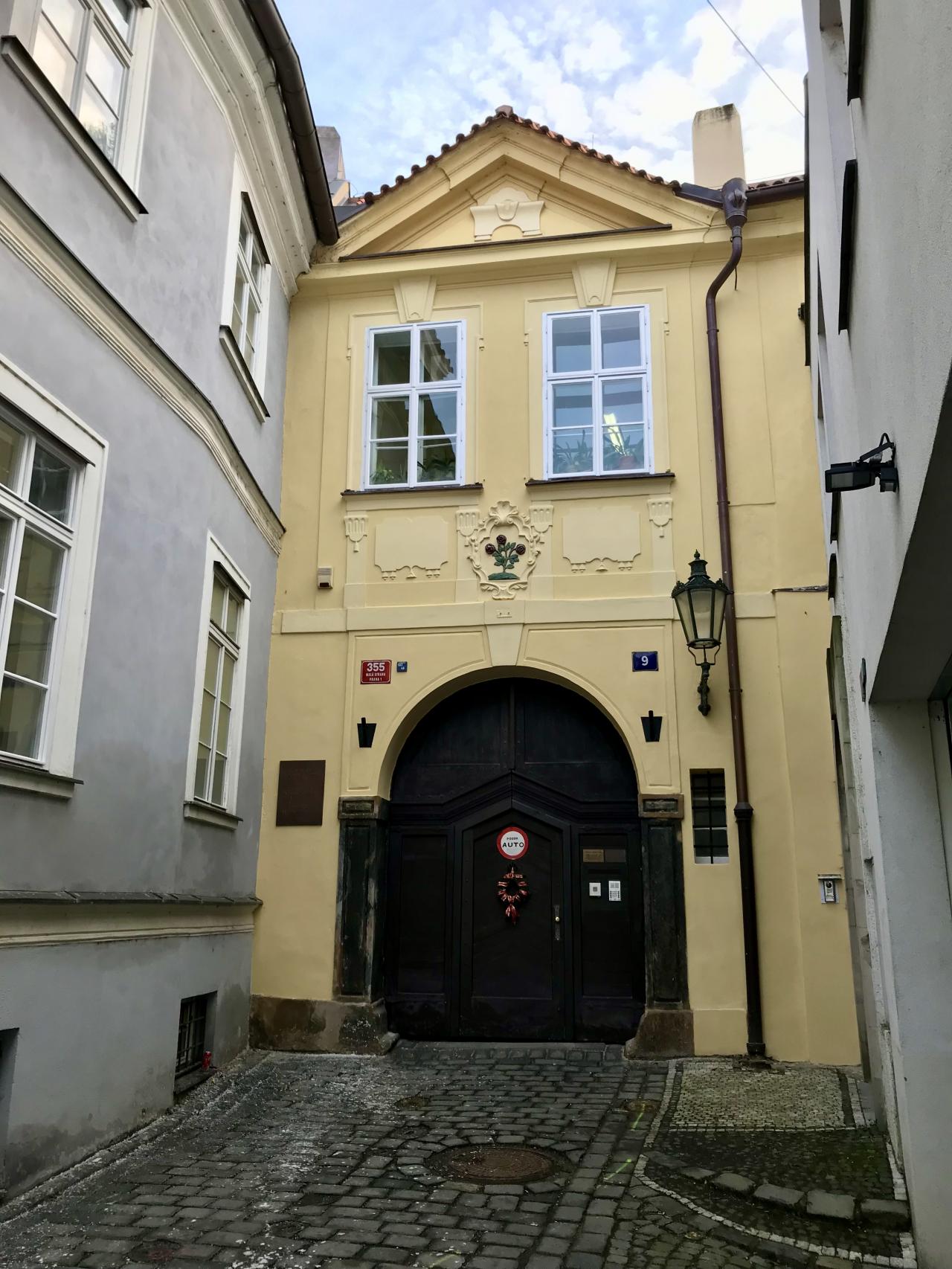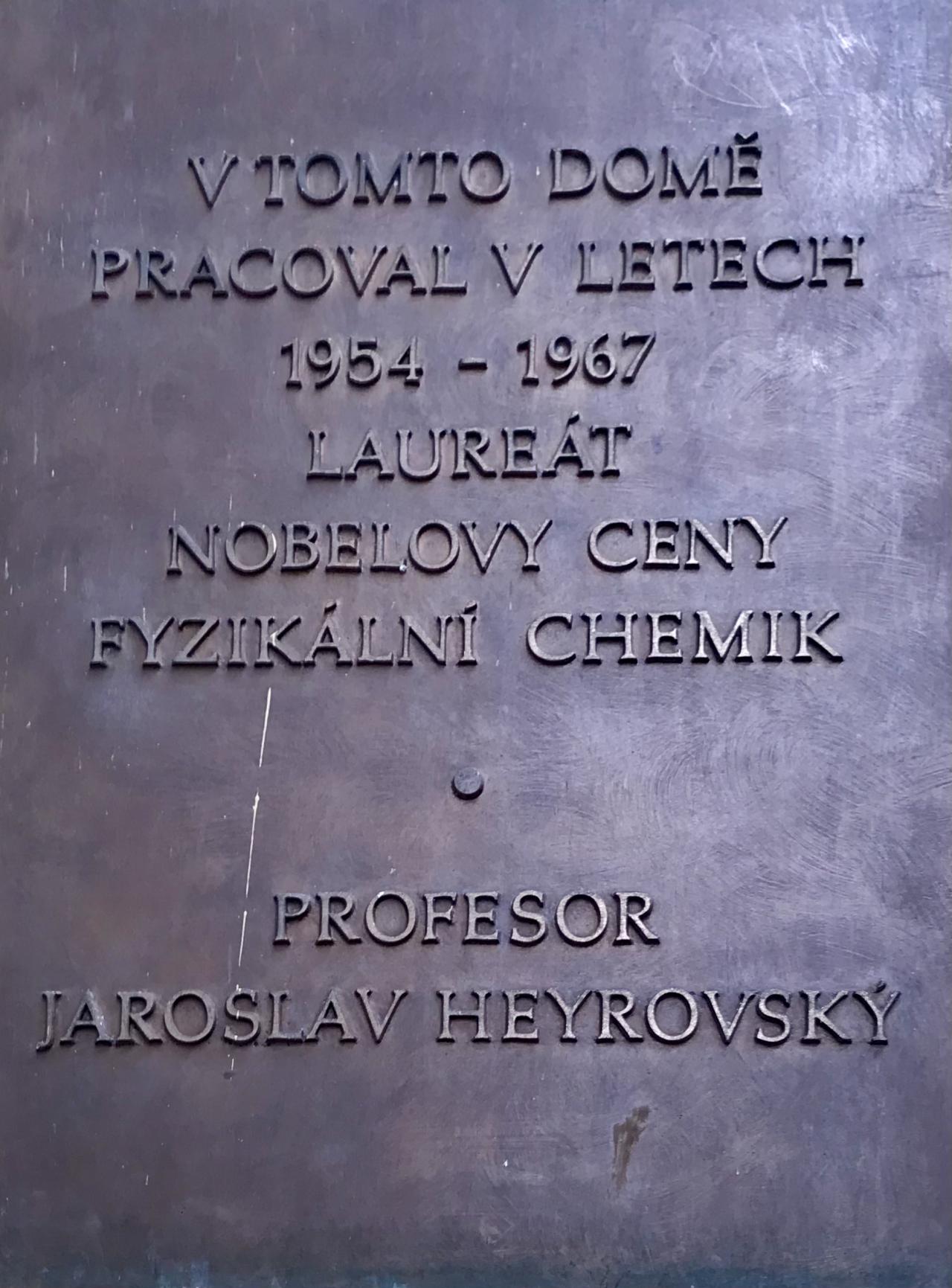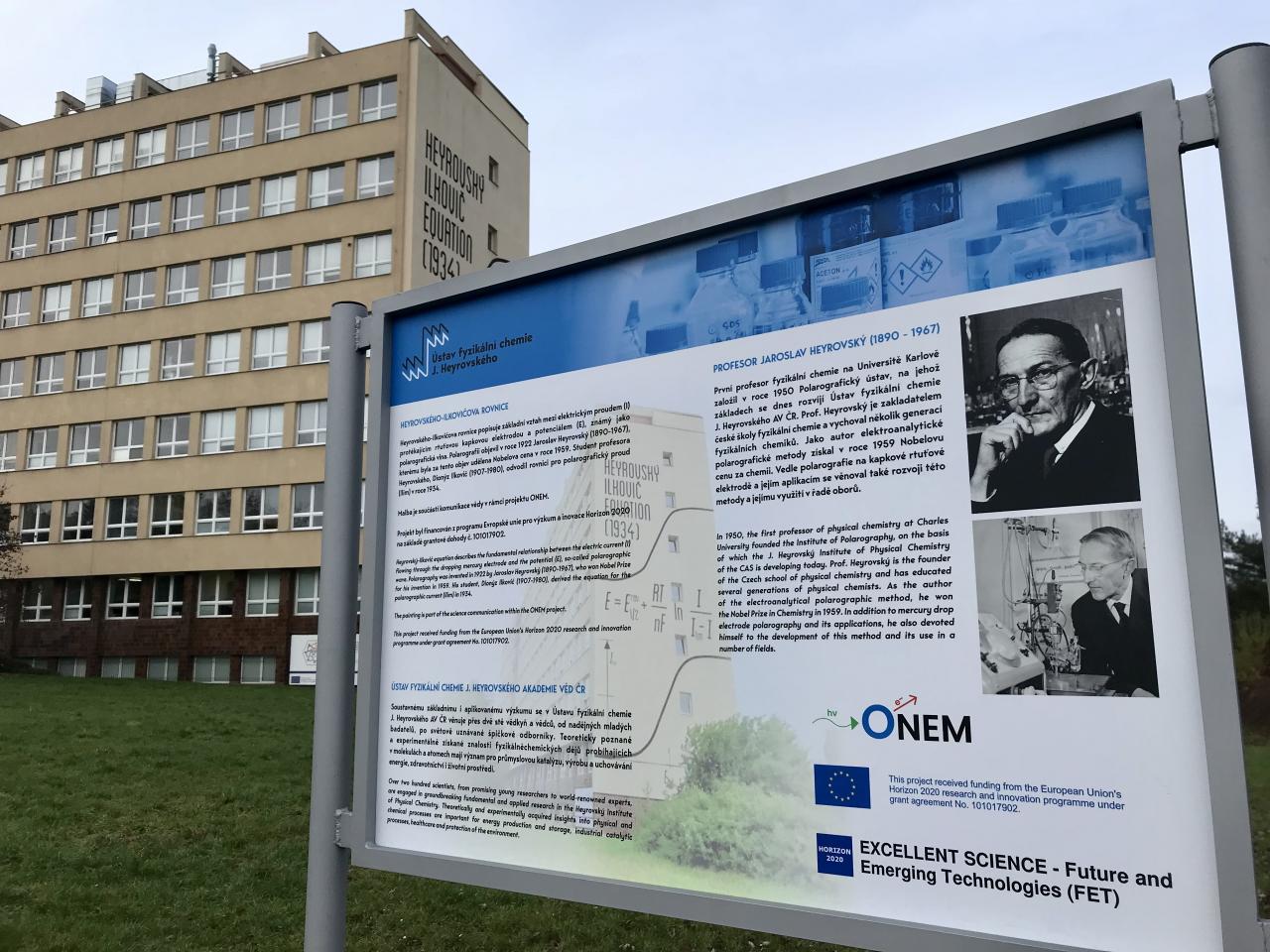Professor Jaroslav Heyrovský (20 December 1890 Prague - 27 March 1967 Prague) is the only Czech winner of the Nobel Prize in Chemistry (as of 2022). The Institute of Polarography, which was founded in 1950, moved from Opletalova Street to the house U Tří růží in Vlašská Street in 1954 under Heyrovský. This was done at the acquisition of new buildings for the newly founded Czechoslovak Academy of Sciences. Heyrovský worked here as director until 1963.
The bronze memorial plaque to Jaroslav Heyrovský on the left side of the front facade, at the entrance to the house, commemorates the last 13 years of Heyrovsky’s research at the Prague Polarographic School. The discovery of the polarographic method in 1922 earned Heyrovsky a total of eighteen Nobel Prize nominations, and he eventually won it in 1959. The plaque reads:
IN THIS HOUSE / WORKED FROM 1954 TO 1967 / NOBEL prize / LAUREATE / PHYSICAL CHEMIST / PROFESSOR / JAROSLAV Heyrovský
The plaque was made at the instigation of the Academic Council of the CAS and unveiled during a small ceremony on 22 March 2001, in the presence of a number of academic guests and family members of Jaroslav Heyrovský, daughter Jitka and son Michael, who followed in their father's footsteps.
Jaroslav Heyrovský began his career in 1918 as an assistant at the Institute of Inorganic and Analytical Chemistry at Charles University under Professor Bohuslav Brauner. He turned his attention to polarography at the suggestion of Professor Bohumil Kučera, with whom he began to collaborate. On 10 February 1922, after four years of research, Heyrovsky described a new phenomenon - electrolysis on a mercury drop electrode. Together with his collaborator and friend Masuza Shikata, he designed an apparatus (1924-25) that automatically recorded the dependence of current on voltage during electrolysis of a sample solution. This instrument gave its name to this method of analysis: polarography.
Further polarograph models were developed in the late 1930s. After the Second World War, polarography began to be applied outside the chemical industry and was most popular during the 1950s and 1960s. The ability to quickly and accurately analyse the composition of substances was applied in the food industry, where polarography was used to determine the content of vitamins or unwanted pesticides and heavy metals, or in medicine, where it was used to analyse body fluids. Today, polarography is no longer used outside the scientific field. It has been replaced by methods of chemical analysis based on it.
Heyrovsky's discovery was also highly acclaimed at the Czechoslovak display at Expo 58 in Brussels. Thanks to a group of scientists from the Heyrovský school of polarography, other fields of physical chemistry and new discoveries were made, which are mainly applied in health care, environment protection or energy storage.
The current centre, which continues the tradition of the original Heyrovsky Institute of Polarography, is the J. Heyrovsky Institute of Physical Chemistry of the Academy of Sciences of the Czech Republic (since 1972, since 1988 located in the Academy complex Na Mazance in Prague 8).
Kvítek, M.: Průkopníci vědy a techniky v českých zemích. Praha, 1994, s. 52–53.
Benešová, O.: Nobelova cena. Historie Nobelovy nadace: laureáti Nobelovy ceny 1901–1996. Praha 1996, s. 36.
Koryta, J.: Jaroslav Heyrovský, Praha 1990.
[20. 6. 2022].








